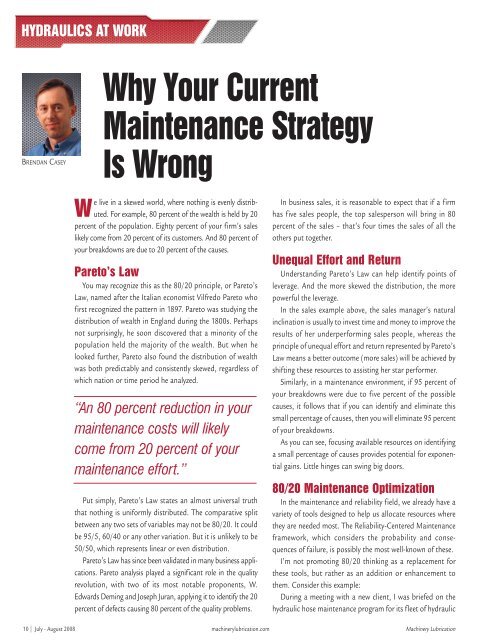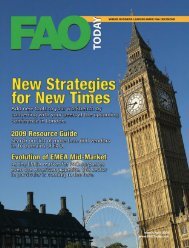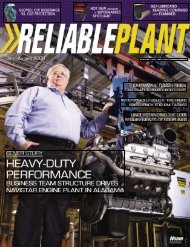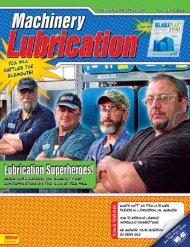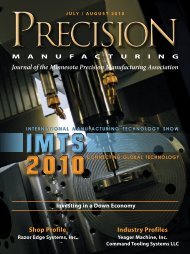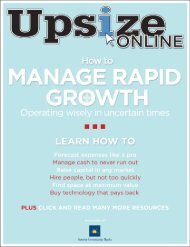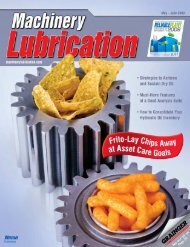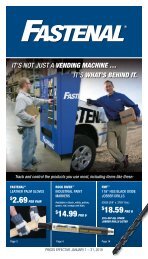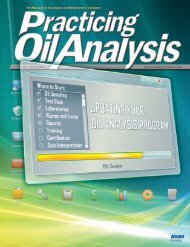Machinery Lubrication July August 2008
Machinery Lubrication July August 2008
Machinery Lubrication July August 2008
You also want an ePaper? Increase the reach of your titles
YUMPU automatically turns print PDFs into web optimized ePapers that Google loves.
HYDRAULICS AT WORK<br />
BRENDAN CASEY<br />
Why Your Current<br />
Maintenance Strategy<br />
Is Wrong<br />
We live in a skewed world, where nothing is evenly distributed.<br />
For example, 80 percent of the wealth is held by 20<br />
percent of the population. Eighty percent of your firm’s sales<br />
likely come from 20 percent of its customers. And 80 percent of<br />
your breakdowns are due to 20 percent of the causes.<br />
Pareto’s Law<br />
You may recognize this as the 80/20 principle, or Pareto’s<br />
Law, named after the Italian economist Vilfredo Pareto who<br />
first recognized the pattern in 1897. Pareto was studying the<br />
distribution of wealth in England during the 1800s. Perhaps<br />
not surprisingly, he soon discovered that a minority of the<br />
population held the majority of the wealth. But when he<br />
looked further, Pareto also found the distribution of wealth<br />
was both predictably and consistently skewed, regardless of<br />
which nation or time period he analyzed.<br />
“An 80 percent reduction in your<br />
maintenance costs will likely<br />
come from 20 percent of your<br />
maintenance effort.”<br />
Put simply, Pareto’s Law states an almost universal truth<br />
that nothing is uniformly distributed. The comparative split<br />
between any two sets of variables may not be 80/20. It could<br />
be 95/5, 60/40 or any other variation. But it is unlikely to be<br />
50/50, which represents linear or even distribution.<br />
Pareto’s Law has since been validated in many business applications.<br />
Pareto analysis played a significant role in the quality<br />
revolution, with two of its most notable proponents, W.<br />
Edwards Deming and Joseph Juran, applying it to identify the 20<br />
percent of defects causing 80 percent of the quality problems.<br />
In business sales, it is reasonable to expect that if a firm<br />
has five sales people, the top salesperson will bring in 80<br />
percent of the sales – that’s four times the sales of all the<br />
others put together.<br />
Unequal Effort and Return<br />
Understanding Pareto’s Law can help identify points of<br />
leverage. And the more skewed the distribution, the more<br />
powerful the leverage.<br />
In the sales example above, the sales manager’s natural<br />
inclination is usually to invest time and money to improve the<br />
results of her underperforming sales people, whereas the<br />
principle of unequal effort and return represented by Pareto’s<br />
Law means a better outcome (more sales) will be achieved by<br />
shifting these resources to assisting her star performer.<br />
Similarly, in a maintenance environment, if 95 percent of<br />
your breakdowns were due to five percent of the possible<br />
causes, it follows that if you can identify and eliminate this<br />
small percentage of causes, then you will eliminate 95 percent<br />
of your breakdowns.<br />
As you can see, focusing available resources on identifying<br />
a small percentage of causes provides potential for exponential<br />
gains. Little hinges can swing big doors.<br />
80/20 Maintenance Optimization<br />
In the maintenance and reliability field, we already have a<br />
variety of tools designed to help us allocate resources where<br />
they are needed most. The Reliability-Centered Maintenance<br />
framework, which considers the probability and consequences<br />
of failure, is possibly the most well-known of these.<br />
I’m not promoting 80/20 thinking as a replacement for<br />
these tools, but rather as an addition or enhancement to<br />
them. Consider this example:<br />
During a meeting with a new client, I was briefed on the<br />
hydraulic hose maintenance program for its fleet of hydraulic<br />
10 <strong>July</strong> - <strong>August</strong> <strong>2008</strong> machinerylubrication.com <strong>Machinery</strong> <strong>Lubrication</strong>


